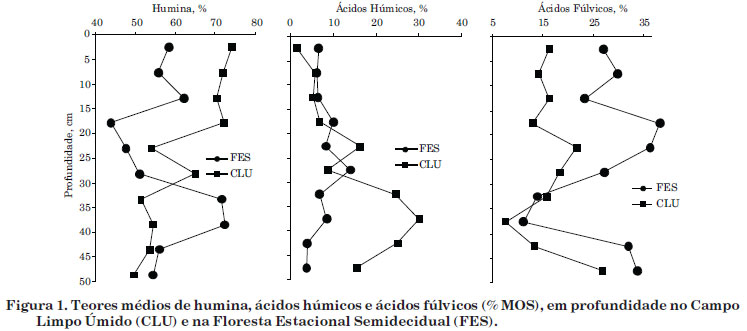Much of the organic matter of a typical peat consists of humic substances, mainly formed via humification of organic residues, decomposed by soil microorganisms, and by the polymerization of organic compounds to functional macromolecules, which are normally more resistant to degradation. The fundamental pathways governing the humification of soil organic matter (SOM) are not well understood so far, and most available data about the identified chemical precursors of humic substances and the main chemical routes by which they are transformed in the peat environment are still poorly understood. What is clear is that all routes involve lignin as a chemical intermediate. Stable isotopes (δ13C, δ15N) can be used to trace humification processes of the soil organic matter (SOM), by identifying their precursors. The purpose of this study was to compare the isotopic composition of vegetation materials from the two bog vegetation types that colonize a tropical highland peatland: moist grassland (CLU) and semideciduous forest (FES), based on the isotopic composition of humic substances of SOM. The whole area of the studied peatland occupies 81.75 ha. To identify the isotopic and lignocellulosic vegetation composition, materials of the dominant species of each vegetation type were sampled. Soil samples were collected from three representative sites per vegetation type, at intervals of 5 cm from the surface down to a depth of 50 cm. The humic substances were isolated from these samples; signals of δ13C and δ15N were determined for the humic fractions. The lignin and and δ13C values were higher in vegetation and SOM under FES than in SOM under CLU. Humin contents were high in SOM under both vegetation types; the levels of humic acids were higher in SOM under CLU than in FES; fulvic acid contents were higher in SOM under FES than CLU. The 13C values for lignin were highly similar to those for humic acids and fulvic acids. Variations in the lignocellulosic composition of the species that colonize the CLU and FES promote different rates and SOM humification products.
Histosols; δ13C and δ15N; fulvic acids; humic acids; humin; vegetation types







